Holy is not a word usually used to describe Mumbai. With its slums, Bollywood divas, millionaires and mafia, and its extremes of poverty and decadence, the city might appear at first glance to be one of the most materialistic places on earth. But Mumbai has a complex personality with hidden depths.
The mighty metropolis that grew from a tiny fishing village has a deeply traditional side, and takes its spirituality very seriously. The high concentration of spectacular religious sites, teeming temples and magical shrines makes it easy for even passing visitors to make progress on the road to enlightenment.
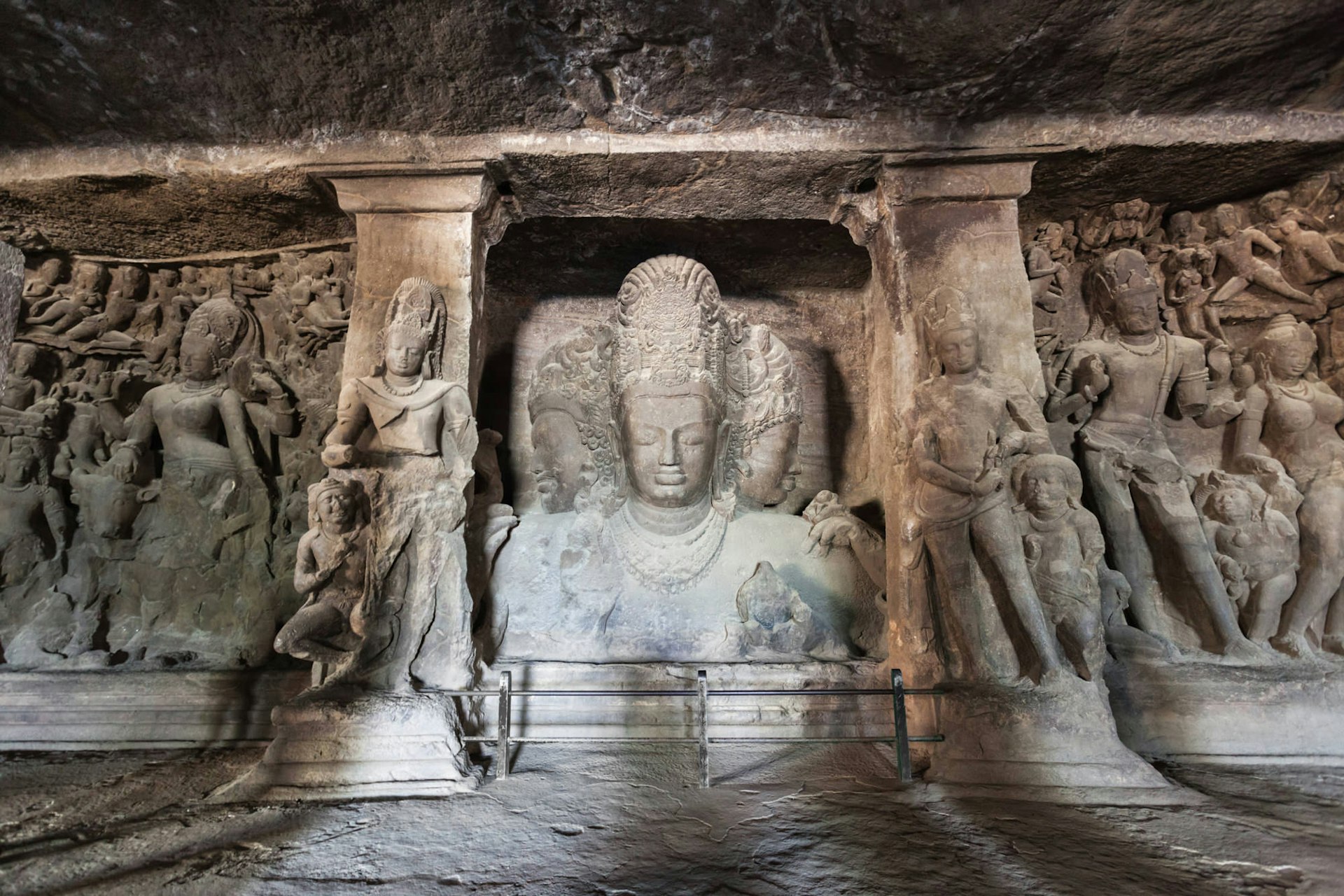
Hinduism
Mumbai is named after the Hindu goddess Mumba Devi, the favoured deity of the fishing communities who occupied these islands before the city burst skywards. Today about 50% of Mumbaikers are Hindu, joined by Muslims, Christians, Sikhs, Buddhists, Jains and Zoroastrian exiles from Iran. To pay your respects to the city’s patron goddess, drop into the humble Mumba Devi Temple on Mumba Devi Marg in the Bhuleshwar neighbourhood, about 1km north of Chhatrapati Shivaji Terminus. Built in the north Indian shikhara style, the shrine is also sacred to Bahuchar Maa, goddess of the transgender hijra community.
For a brush with the city’s other favourite deity, Ganesha, head to the Shree Siddhivinayak temple on Swatantrya Veer Sawarkar Marg in Prabhavdevi (accessible via the Central Line). It is believed that the four-armed effigy enshrined here can fulfil the wishes of every visiting devotee; a throng of hopeful pilgrims, including celebrities and politicians, walk barefoot to the temple from far flung corners of the city every Tuesday seeking answers to their prayers.
Alternative stops for an audience with Ganesha include the Vazira Naka Ganpati temple off Lokmanya Tilak Rd in the western suburb of Borivali, where the deity is worshipped in the form of a carved boulder, and the popular Garodia Nagar Ganpati temple on Cama Lane in the central suburb of Ghatkopar (northeast of Bandra). Both temples draw crowds of thousands daily, and even larger congregations during Ganesh Chaturthi, Mumbai’s legendary annual Ganesh festival.
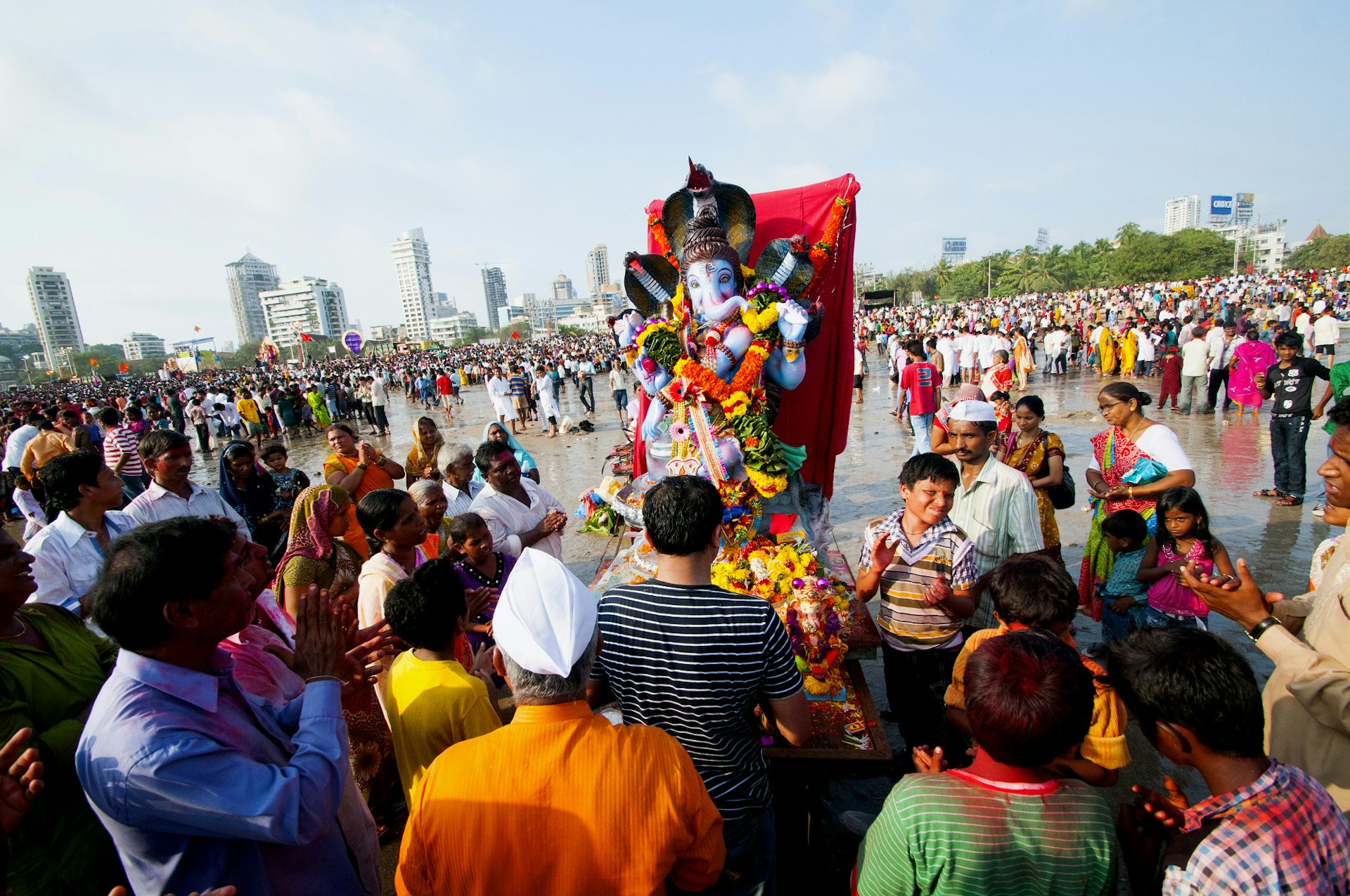
Mumba Devi and Ganesha are just two of many Hindu deities honoured in Mumbai. Bhakts (devotees) of Lord Shiva gather at the Bhuleshwar Mahadev temple and Babulnath temple in South Bombay, while the ISKCON temple on Juhu Church Rd near Juhu Beach is part of the Hare Krishna movement, which has garnered thousands of European converts with its doctrine of devotional ecstasy. Hindus of all sects visit the Mahalakshmi temple on the shore in Tardeo, sacred to the goddess of wealth and prosperity. For a combination of spirituality and creativity, visit the Banganga Tank and Walkeshwar Temple at Banganga Chowk on Malabar Hill during the annual Banganga Festival in January, when musicians fill the air with Indian classical music.
Arguably the most impressive Hindu site in Mumbai is on Elephanta island, which floats in the waters of Mumbai Harbour and is accessible by launch from the Gateway of India. Unesco-listed, the 5th-century caves contain some of the most striking temple carving in Maharashtra, despite the best efforts of Portuguese soldiers to destroy the ‘pagan’ idols. Don’t miss the 6m-tall statue of Sadhashiva, depicting the three-faced Shiva as creator, preserver and destroyer of the universe.
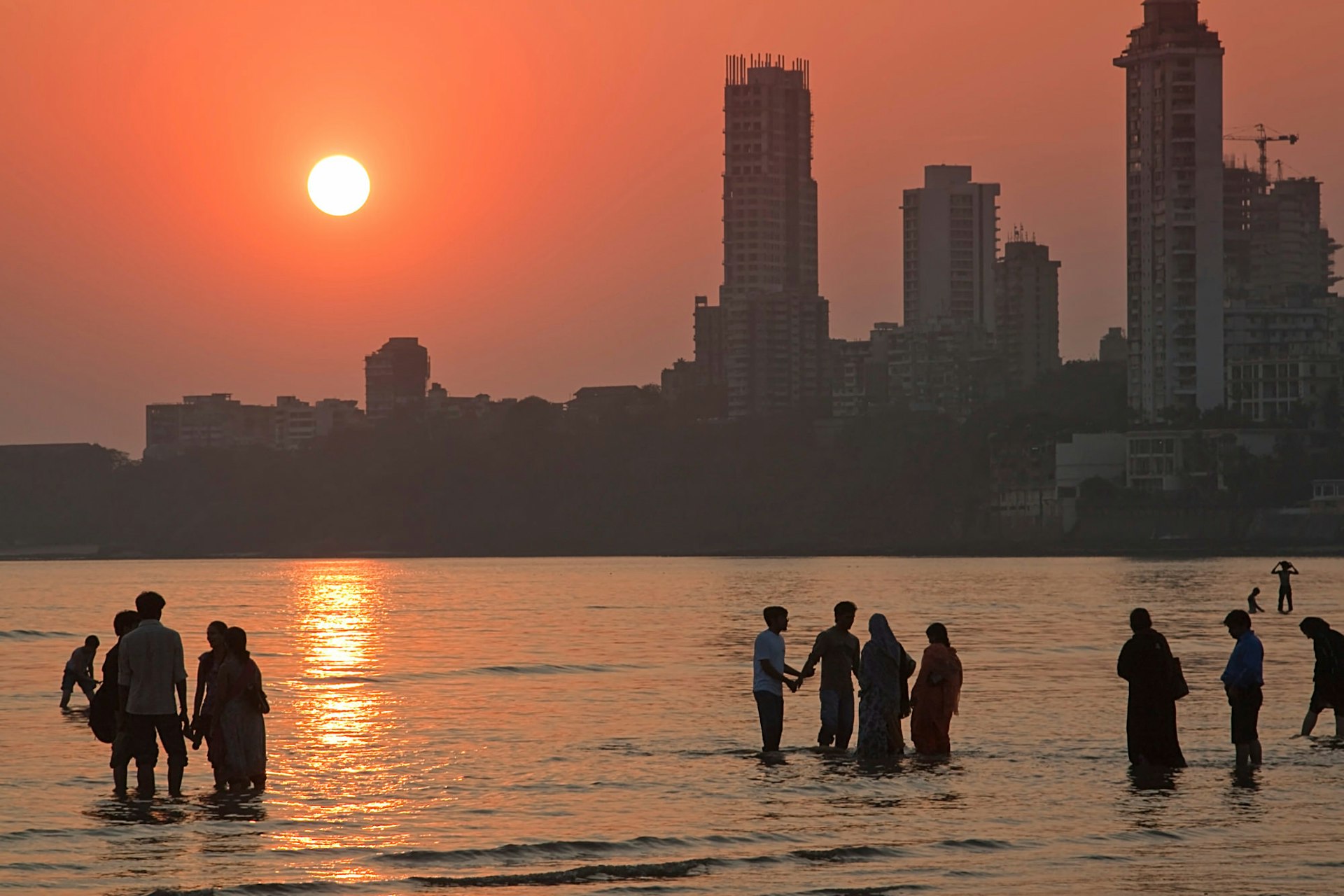
Jainism
Mumbai is home to one of the largest Jain populations in India and the city is studded with exquisitely carved Jain temples. Take the Western Line to Charni Rd or Grant Rd near Malabar Hill to see the spectacular Babu Amichand Panalal Adishwarji temple on Walkeshwar Marg; Jain temples are famed for their beauty, and this handsome derasar is renowned even among Jain temples. Check out the ecstatically colourful zodiac dome ceiling: chances are, you’ve never seen anything like it.
Crossing the isthmus to Bhagwanlal Indrajit Rd, Godiji Parshwanath Jain Derasar is said to be the oldest Jain temple in Mumbai, and across the street is the Shantinath Jain Temple, built from timber in 1815 but now reconstructed in pink stone. Another striking temple is the Mahavir Swami Derasar on Kalbadevi Rd in Bhuleshwar, busy with worshippers throughout the day and easy to spot with its white shikharas (towers) rising above the low buildings and stalls selling religious items.
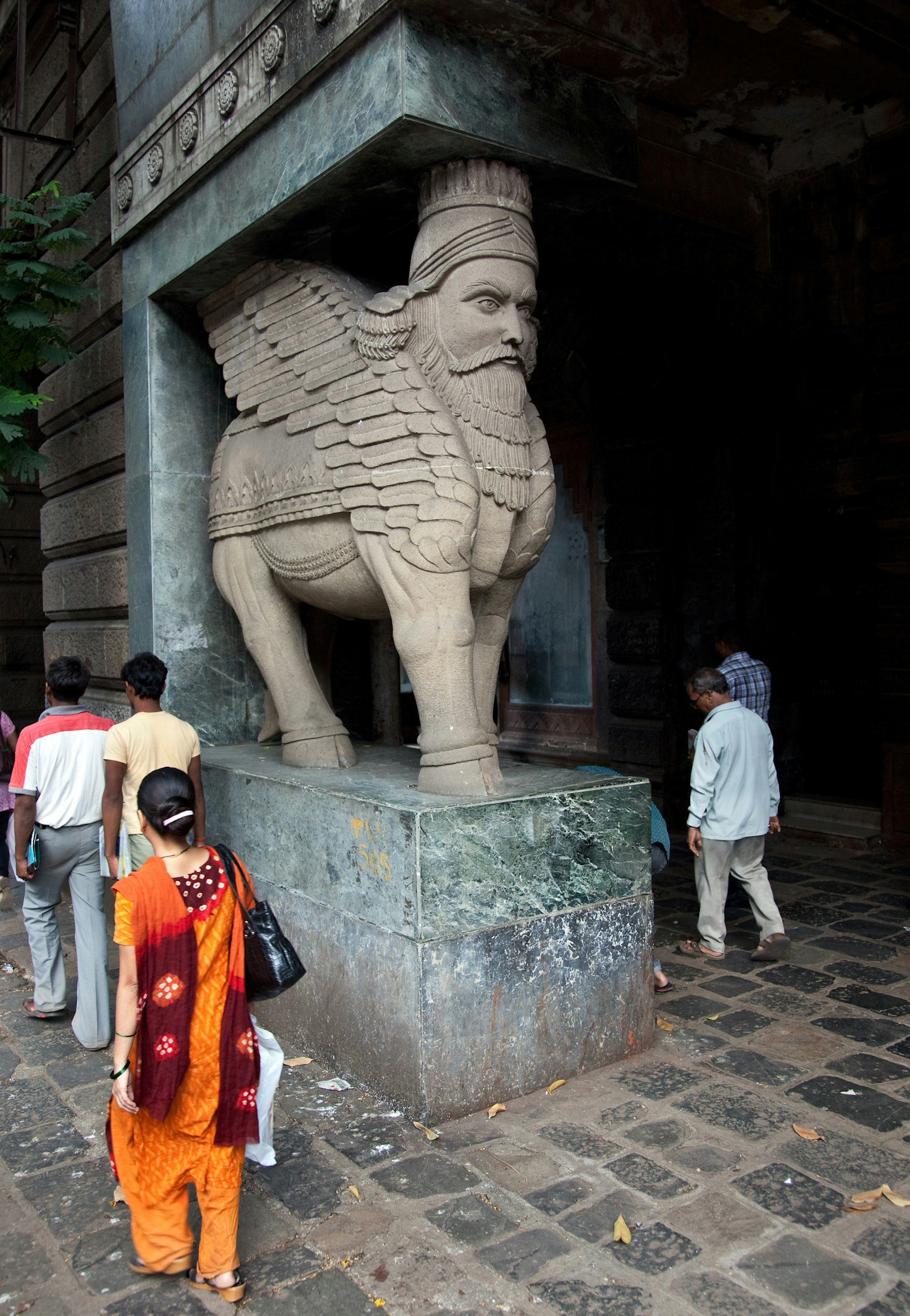
Zoroastrianism
Having explored Jain culture in Walkeshwar, you’re not too far away from the sprawling grounds of Mumbai’s Towers of Silence on BG Kher Rd, where Parsis – followers of the Zoroastrian faith who originally came to Mumbai as refugees from Iran – leave the deceased to be consumed by birds of prey in an ancient form of sky burial. For reasons of respect, the compound is not open to visitors, but you can meditate on impermanence as you pass by the lush hill on which the towers are set.
Most Parsi places of worship are only open to Zoroastrians, so visitors must make do with viewing Mumbai’s Parsi shrines and agiaries (fire temples) from the outside. This policy is attributed to a deal struck by the first refugees from Iran, who promised to avoid converting local residents in exchange for protection and privacy. However, there are still a few spaces which are impressive enough from the outside to be worth a visit.
Perhaps the most striking is the Maneckji Seth agiary on Perin Nariman St in Fort, notable for the handsome shedu (winged bulls with the heads of men) that flank its doorway. Just south, the BH Wadia clock tower at the junction with Rustom Sidhwa Marg was raised in 1882 in honour of the Parsi philanthropist Bomanjee Hormusjee Wadia, with more shedu at its base. The Bhikha Behram Well, close to Churchgate Station on Veer Nariman Rd, was dug by another Parsi philanthropist way back in 1725. To learn more about the history of the community, visit the FD Alpaiwala Museum at Kemps Corner on Hughes Rd, Mumbai’s only Parsi museum.
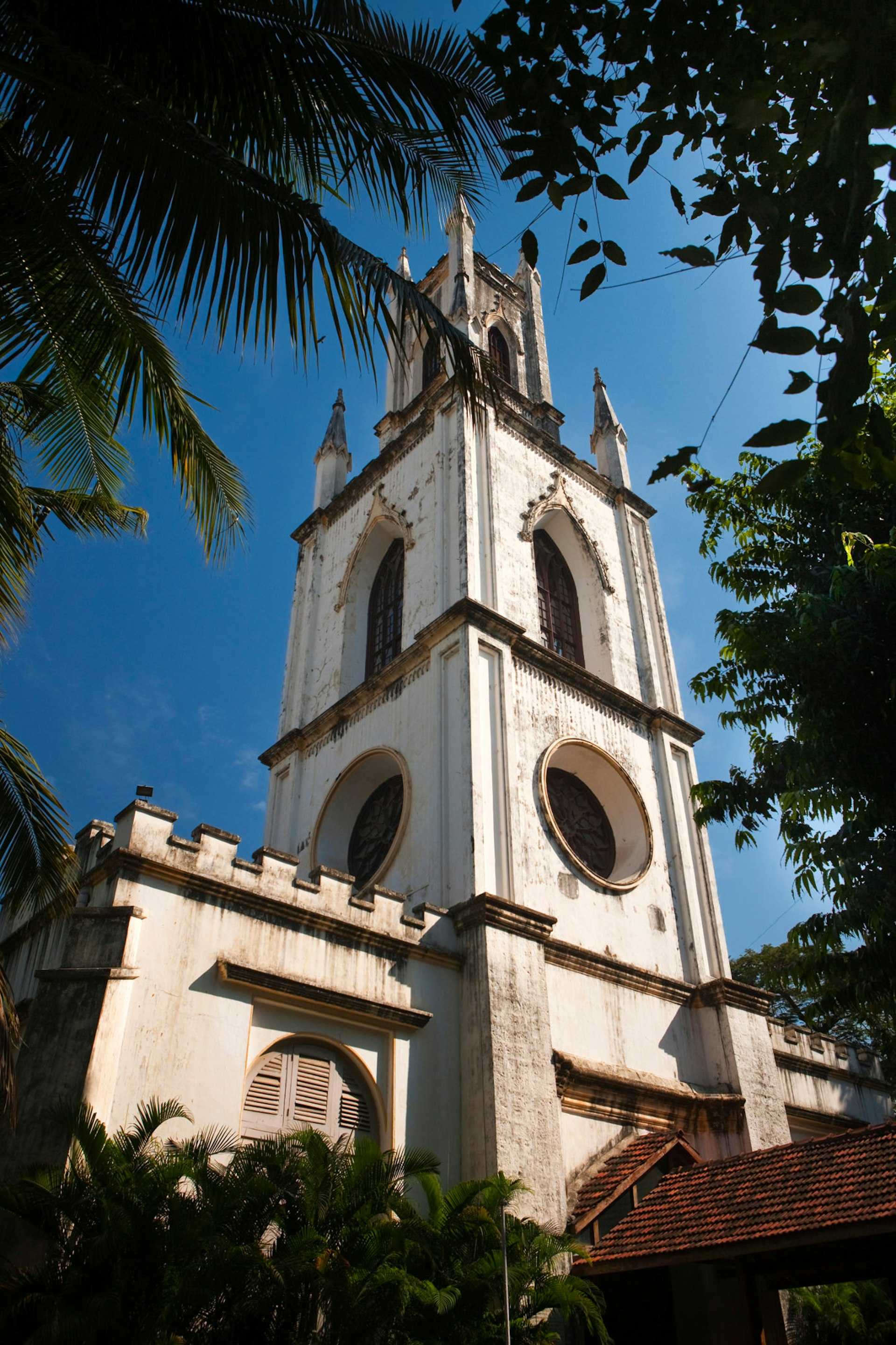
Christianity
While Mumbai has been ruled by many invaders, it was under the British that the city grew as a crucial seat for India’s inclusive brand of Christianity. Perhaps the most popular house of worship in modern Mumbai is the Mount Mary Church on Mount Mary Rd in Bandra, established by native Koli fishermen and women who converted to Christianity in colonial times. In the same area is the oldest standing structure in Bandra, St Andrew’s Church, founded in 1575 by Portuguese colonists almost a century before the British gained a foothold in Mumbai.
In south Mumbai, the historic St Thomas’ Cathedral near Horniman Circle in Fort was named for the widely-travelled apostle Thomas, who visited India in the first century AD and later died near Chennai. The pretty church, the oldest British-built building in Mumbai, was the official seat of the first Bishop of Bombay, standing within the now vanished walls of the East India Company’s fort; services are still held on Sundays. Also in South Mumbai is the Church of St Teresa on Jagannath Shankar Seth Rd in Girgaum, another Portuguese structure whose red-and-white exterior pays homage to the stately villas of Goa.
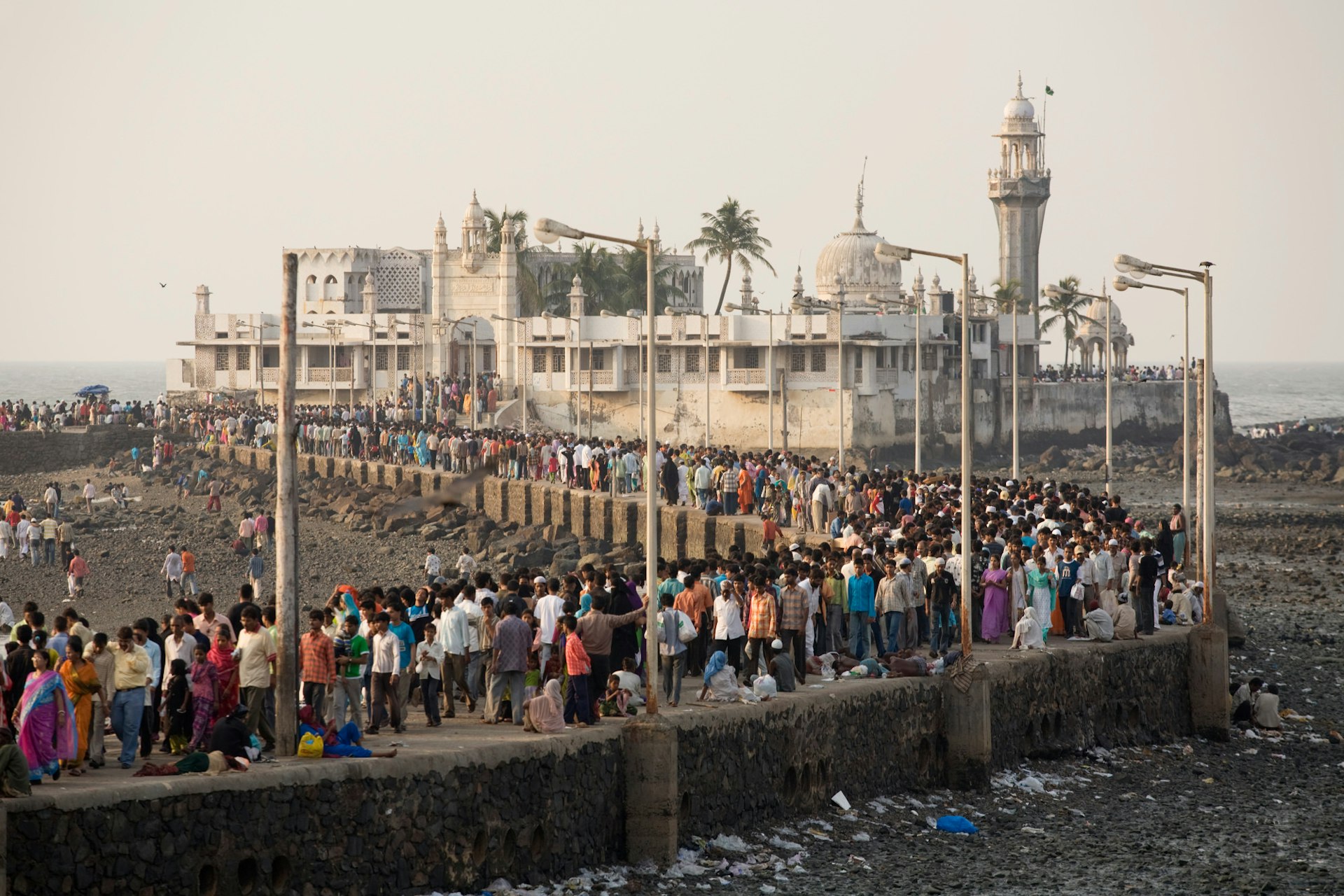
Islam
Islam reached Mumbai in the 14th century, when the islands were ruled as a province of the Gujarat sultanate, and today, some 19% of residents are Muslim, so mosques and other Islamic shrines abound. Just north of the Mahalaxmi temple in Worli and seeming to float offshore on the Arabian Sea is the 15th-century dargah (mausoleum) of Haji Ali. Legend has it that the saint died on his way to Mecca and his casket floated to this spot. This atmospheric shrine and mosque is connected to the mainland by a small causeway that disappears at high tide; at low tide, pilgrims crowd the causeway and beggars line the route seeking alms. Come on a Thursday or Friday, when the shrine resounds to the haunting music of qawwali (Sufi devotional singing).
Further south on Mohmammed Ali Rd, the area’s biggest landmark and the hub of the local Muslim community is the beautiful Minara Masjid, surrounded by food stalls and the first shrine in the city to be powered by solar energy. Other noteworthy mosques include the Gol Masjid at Marine Lines, popular with shopkeepers and taxi drivers, and Bandra’s Jama Masjid on Swami Vivekanand Marg, an elaborately ornamented mosque with tall white minarets, onion-shaped domes and stained glass windows.
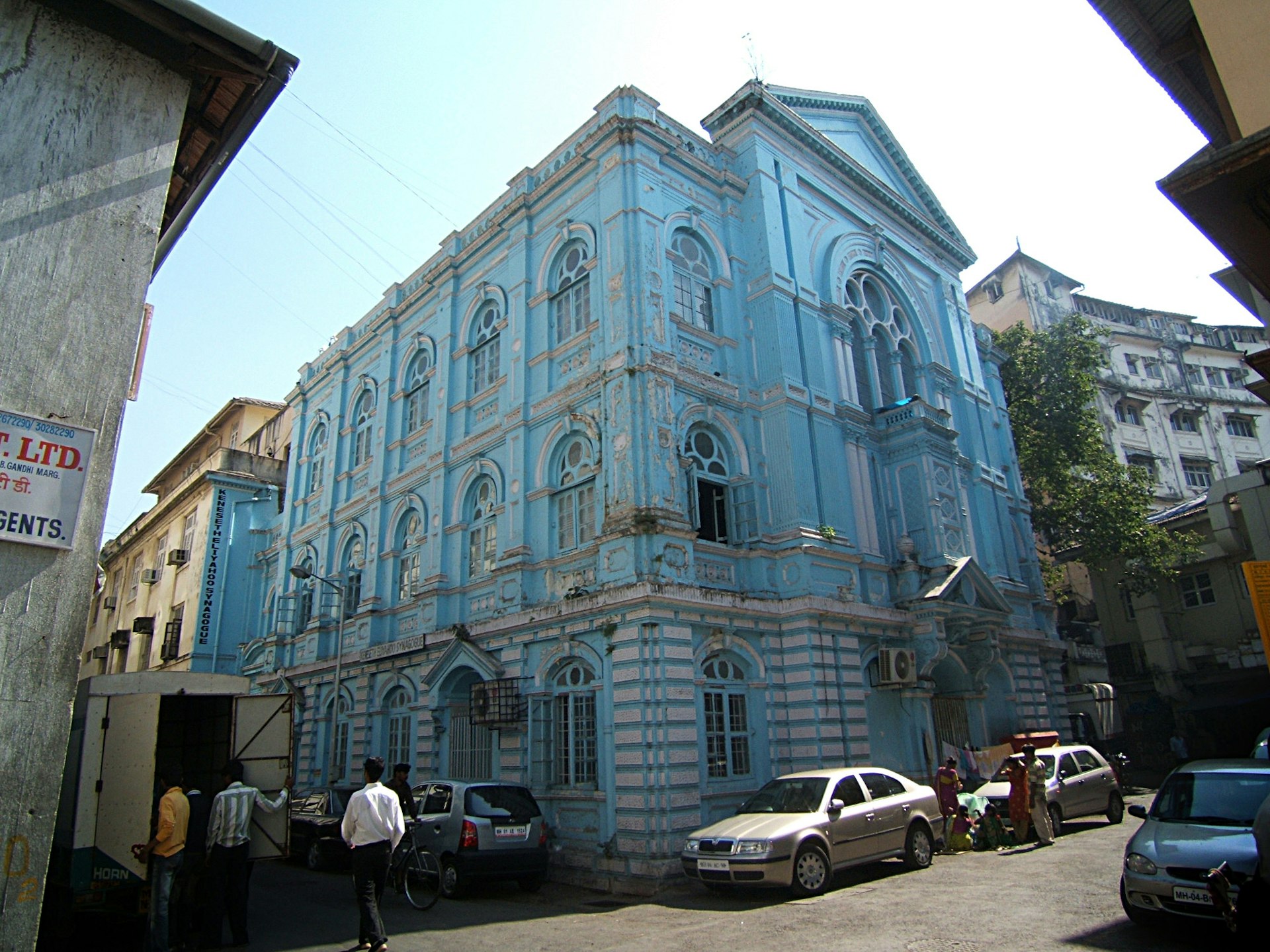
Judaism
In the city centre, the sky-blue Keneseth Eliyahoo Synagogue is still an active house of worship for Mumbai’s small Jewish population, which numbers around 5000. Founded in 1884, the chapel-like synagogue is a Victorian fantasy of candy-cane columns and brass chandeliers. The Jewish community was also responsible for building Colaba’s frenetic Sassoon Dock, on Shahid Bhagat Singh Rd, founded to serve the cotton ships of the British empire in 1875 but today used by Koli fishermen to land the tonnes of fish served up in Mumbai’s markets and restaurants. Visiting before dawn, when fishermen unload and business-minded Koli women do the serious work of selling the catch on to market wholesalers and restaurateurs, is a pungent, cacophonous blast to the senses.
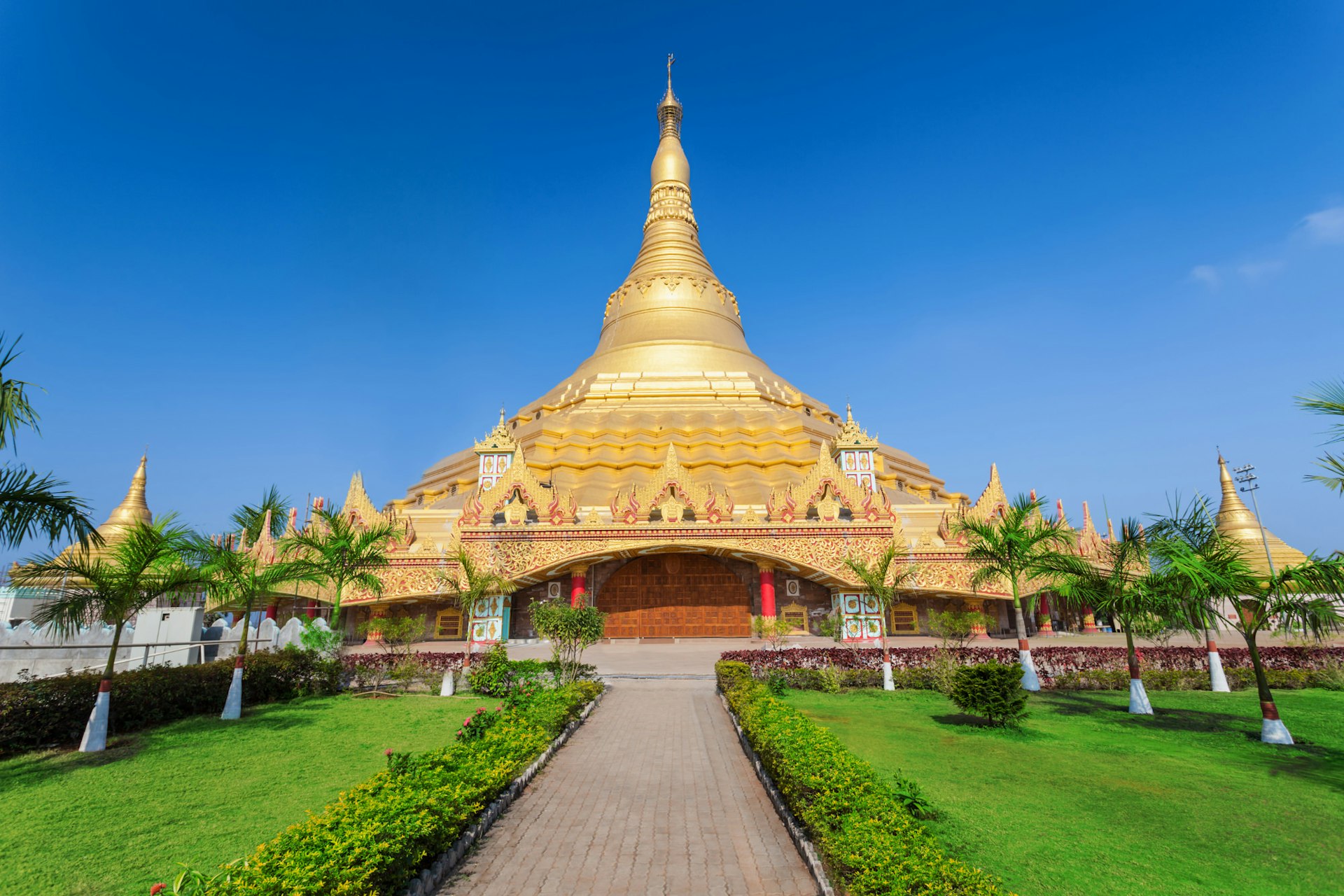
Buddhism
Buddhists are one of the oldest communities to set up shop in Mumbai, and the area had a Buddhist population long before the British set foot on the marshes. Hollowed out in the first century BC, the Kanheri caves, tucked away in Sanjay Gandhi National Park in Borivali, were part of a sprawling Buddhist university complex for almost a millennium before they were abandoned.
There are more recent Buddhist monuments closer to the centre. The elegant Nipponzan Myohoji Temple on Dr Annie Besant Road in Worli was founded by Japanese Buddhists in the 1930s and is thronged by devotees daily, but even more pilgrims pay their respects at the Chaitya Bhoomi on Sant Dyaneshwar Marg in Dadar, the city’s largest and most significant Buddhist stupa, which commemorates the social reformer Dr BR Ambedkar, who championed the rights of the marginalised Dalit (untouchable) community, inspiring half a million people to follow his example and convert to Buddhism.
To trace Buddha’s spiritual journey, set aside a day to visit the spectacular Global Vipassana Pagoda on Gorai Island, dedicated to the teachings of the Buddha, some of whose relics are encased within. The towering golden stupa, modelled on Myanmar’s Shwedagon Pagoda, is made entirely of interlocking stone blocks and is the world’s largest unsupported dome. It has a small museum and meditation centre on site, where the spiritually inclined can take a 10-day Buddhism course or a one-hour teaser.

